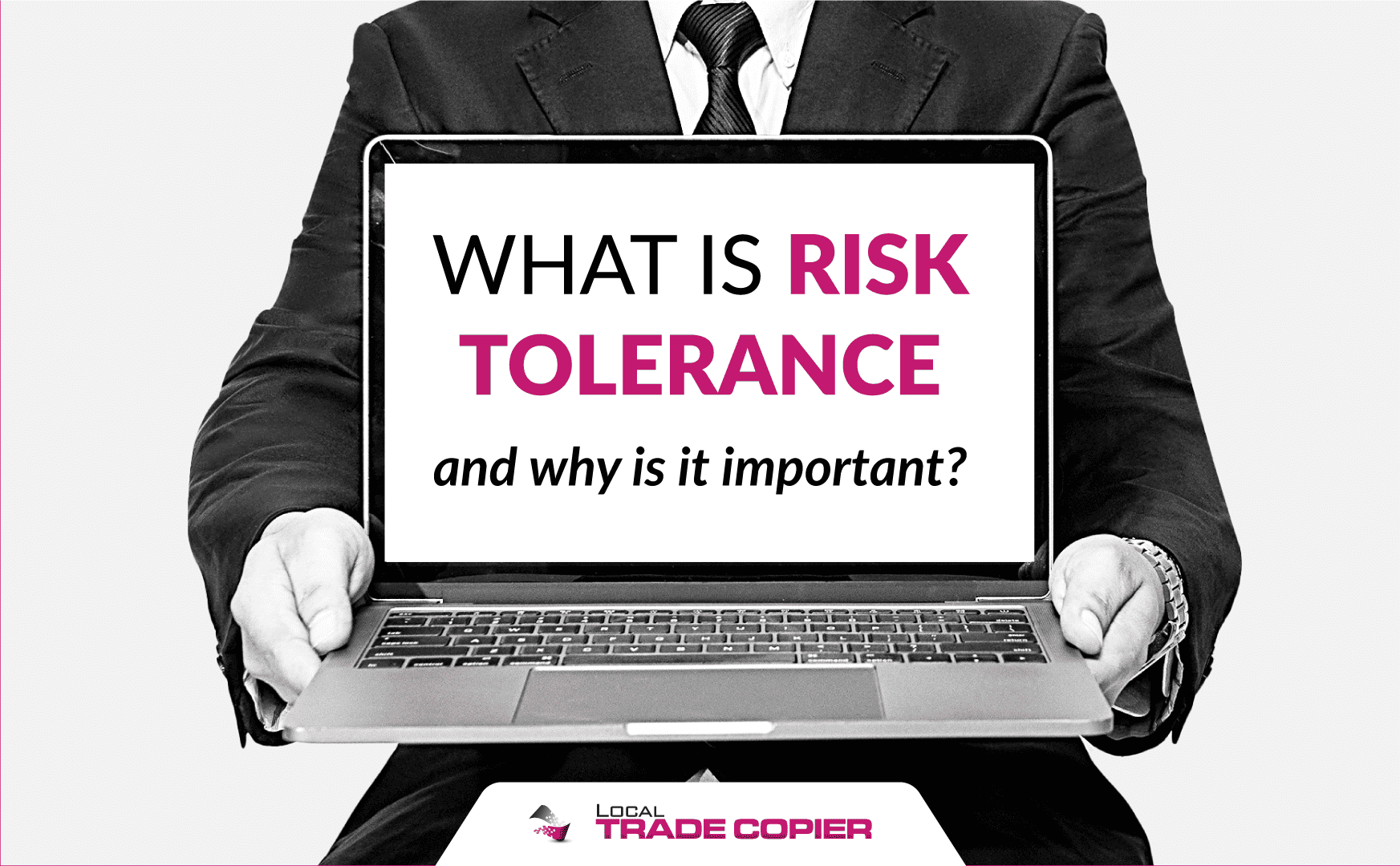
Understanding Risk Appetite in Trading: Significance & Impact on MT4 Copiers

Understanding Risk Appetite in Trading: Significance & Impact on MT4 Copiers

When it comes to managing your finances and making investment decisions, one of the most critical factors to consider is your risk tolerance. But what exactly is risk tolerance, and why is it so important? In this article, we’ll delve into this fundamental concept, exploring what it means and why it should be a key consideration for anyone looking to build and protect their wealth.
Table of Contents
- Introduction
- Understanding Risk Tolerance
- The Significance of Risk Tolerance
- Assessing Your Own Risk Tolerance
- Strategies for Managing Risk
- The Emotional Aspect of Risk Tolerance
- Balancing Risk and Reward
- Long-Term vs. Short-Term Risk Tolerance
- Adapting to Changing Circumstances
- Common Misconceptions
- Importance of Regular Reviews
- Conclusion
- FAQs
- 1. Can my risk tolerance change over time?
- 2. Is a higher risk tolerance always better for higher returns?
- 3. Are risk tolerance questionnaires accurate in assessing my risk tolerance?
- 4. How often should I review my investment portfolio’s alignment with my risk tolerance?
- 5. Can risk tolerance be improved with education and experience?
- Related posts:
Disclaimer: This post includes affiliate links
If you click on a link and make a purchase, I may receive a commission at no extra cost to you.
Introduction
In the ever-evolving landscape of personal finance and investment, individuals are often faced with critical choices. Should they invest in stocks or bonds, real estate or Forex trading , or perhaps opt for safer, low-yield investments? The answer lies in understanding one’s risk tolerance.
Understanding Risk Tolerance
Risk tolerance is essentially the degree of uncertainty that you are willing to endure when it comes to your financial investments. It’s a personal, subjective measure that varies from one individual to another. Some people are comfortable with taking on significant financial risks, while others prefer a more conservative, low-risk approach.
Several factors influence your risk tolerance, including:
1. Age
Your age plays a significant role in determining your risk tolerance. Younger individuals often have a higher risk tolerance because they have more time to recover from any potential losses. In contrast, as you get older, your risk tolerance may decrease as you approach retirement and aim for capital preservation.
2. Financial Goals
Your financial objectives also play a critical role. If you’re saving for a short-term goal, like buying a car, you might opt for lower-risk investments. However, if you’re saving for a long-term goal such as retirement, you may be more willing to take on higher risks for potentially greater returns.
3. Investment Knowledge
Your understanding of financial markets and investment strategies can influence your risk tolerance. Those with more knowledge and experience may be more willing to engage in riskier investments because they have a better grasp of the potential rewards and pitfalls.
4. Temperament
Your personal attitude towards risk matters. Some people are naturally more risk-averse, preferring stability and predictability. Others thrive on the excitement and potential rewards of taking bigger risks.
The Significance of Risk Tolerance
Now that we’ve defined risk tolerance, let’s dive into why it’s so crucial in the realm of finance.
1. Investment Decision-Making
Your risk tolerance is the compass that guides your investment decisions . Understanding it enables you to select investment options that align with your comfort level, reducing the chances of making impulsive decisions. It helps you choose assets that match your risk profile, avoiding unnecessary stress and potential financial disasters.
2. Achieving Financial Goals
At the heart of risk tolerance is your ability to achieve your financial goals. Creating a well-balanced investment portfolio that harmonizes with your risk tolerance can set you on the path to financial success. Whether it’s preparing for retirement, purchasing a new home, or funding your child’s education, the right risk level is essential for reaching your objectives.
Assessing Your Own Risk Tolerance
Now that you recognize the significance of risk tolerance, how do you go about assessing your own level of risk tolerance?
1. Risk Tolerance Questionnaires
Many financial institutions offer risk tolerance questionnaires to help individuals gauge their comfort with risk and guide them towards suitable investment options. By answering a series of questions, you can gain valuable insights into your risk tolerance and discover investment opportunities tailored to your profile.
2. Consultation with Financial Advisors
Another effective method to assess your risk tolerance is through professional advice. Financial advisors consider your unique financial situation, long-term goals, and knowledge level, providing personalized guidance based on their expertise.
Strategies for Managing Risk
Having assessed your risk tolerance, it’s essential to explore strategies for managing risk effectively.
1. Diversification
Diversification is a risk management technique that involves spreading your investments across different asset classes. By diversifying, you reduce risk by not relying on a single investment. A diversified portfolio can weather market storms more effectively.
2. Asset Allocation
Asset allocation is the process of distributing your investments among various asset classes, such as stocks, bonds, and cash. It’s a fundamental strategy for managing risk according to your risk tolerance and financial objectives.
3. Rebalancing
Regularly reviewing and rebalancing your investment portfolio is vital. This ensures that your investments remain aligned with your current risk tolerance and financial goals. Over time, as the market changes, your asset allocation may shift, requiring adjustments to stay on track.
The Emotional Aspect of Risk Tolerance
Beyond the technical aspects, understanding the emotional side of risk tolerance is vital. Market fluctuations can trigger strong emotional reactions, leading to impulsive, ill-advised decisions. Learning to manage these emotions is a crucial part of maintaining a healthy risk tolerance.
Balancing Risk and Reward
Balancing risk and reward is both an art and a science. Risk tolerance is about finding the equilibrium between the potential for higher returns and the possibility of losses. It’s a fundamental element in achieving financial success while ensuring that your investments align with your aspirations.
Long-Term vs. Short-Term Risk Tolerance
It’s essential to differentiate between your risk tolerance for short-term and long-term goals. What you’re comfortable with for a high-stakes, short-term investment may not be the same as what you’d prefer for long-term wealth preservation. Ensure that your investments match your time horizon and financial objectives.
Adapting to Changing Circumstances
Life is dynamic, and your financial situation may change. Regularly reassessing your risk tolerance is crucial to ensuring that your investments remain appropriate as your life evolves. New circumstances, experiences, and goals may prompt adjustments to your risk profile.
Common Misconceptions
To fully understand risk tolerance, it’s essential to address common misconceptions. For example, having a higher risk tolerance doesn’t always translate to higher returns. It’s about taking on the right kind of risk that aligns with your goals and comfort level.
Importance of Regular Reviews
Regularly reviewing your investment portfolio is crucial. These reviews help you stay on course with your financial objectives, adjust your investments to match your risk tolerance, and adapt to changing circumstances. Financial markets can be volatile, and regular reviews ensure that your investments remain in line with your long-term goals.
Conclusion
Risk tolerance is not just a technical concept; it’s the compass that guides your financial journey. Understanding your risk tolerance empowers you to make informed decisions, adapt to changing circumstances, and work towards your financial aspirations. By managing your risk effectively, you can pave the way for a secure and prosperous financial future.
FAQs
1. Can my risk tolerance change over time?
Ans. Yes, your risk tolerance can change due to factors such as life events, financial goals, and investment knowledge.
2. Is a higher risk tolerance always better for higher returns?
Ans. Not necessarily. Higher risk may lead to higher returns, but it also increases the potential for losses.
3. Are risk tolerance questionnaires accurate in assessing my risk tolerance?
Ans. They provide a general guideline, but consulting with a financial advisor can offer more personalized insights.
4. How often should I review my investment portfolio’s alignment with my risk tolerance?
Ans. It’s advisable to review your portfolio at least annually, or more frequently if your circumstances change.
5. Can risk tolerance be improved with education and experience?
Ans. Yes, as you gain knowledge and experience in investing, your risk tolerance may increase.
Related posts:
- Most Effective Strategies for Managing Risk in Forex Trading
- Disposition Effect: What is it and How it Works
- Forex vs. Stocks: Which is Better?
- Best US Forex Brokers for 2023
Also read:
- [New] In 2024, Unraveling the Best Solo Play Strategies for Apex Legends
- How To Customize Your E-Book Dimensions Using FlipBuilder – Expert Tips and Tricks
- How to Effectively Exhibit Flipbooks Online: Ideal Locations & Tips for Using FlipBuilder.com
- Interstellar Bookkeeper Rehab Guide
- IPhone Camera Techniques for Quality Shots for 2024
- Mastering Layout Design: Adjusting Margin Settings for Flipbooks on FlipBuilder.com
- Mastering the Art of Embedding Contact Forms in Ebooks Using FlipBuilder's Tools
- Mastering VOB Conversion: Make Your Footage Work with iMovie Seamlessly
- Top 7 Skype Hacker to Hack Any Skype Account On your Honor Magic 6 Pro | Dr.fone
- スマートフォン用: IPhone/Android対応ニコニコ動画ダウンロード保存方法
- Title: Understanding Risk Appetite in Trading: Significance & Impact on MT4 Copiers
- Author: Joseph
- Created at : 2025-01-21 17:00:41
- Updated at : 2025-01-23 17:11:33
- Link: https://discover-bytes.techidaily.com/understanding-risk-appetite-in-trading-significance-and-impact-on-mt4-copiers/
- License: This work is licensed under CC BY-NC-SA 4.0.